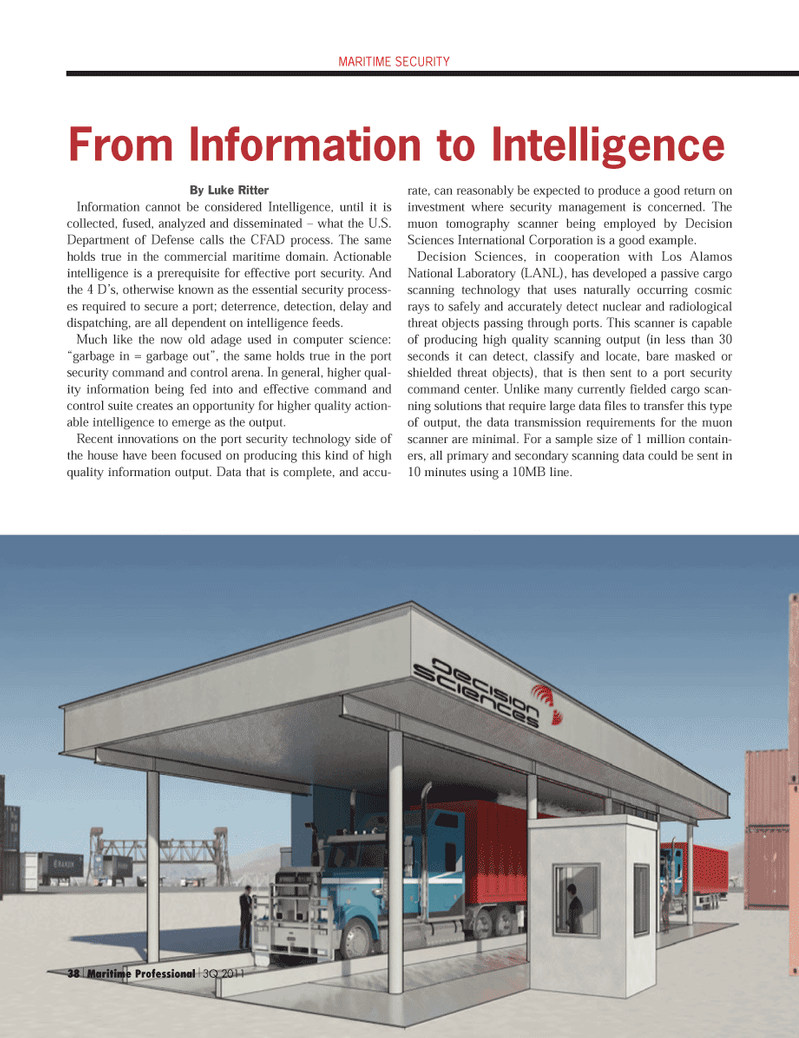
Page 38: of Maritime Logistics Professional Magazine (Q3 2011)
Maritime Security / Maritime Training & Education
Read this page in Pdf, Flash or Html5 edition of Q3 2011 Maritime Logistics Professional Magazine
38 Maritime Professional 3Q 2011By Luke RitterInformation cannot be considered Intelligence, until it iscollected, fused, analyzed and disseminated ? what the U.S.Department of Defense calls the CFAD process. The same holds true in the commercial maritime domain. Actionable intelligence is a prerequisite for effective port security. And the 4 D?s, otherwise known as the essential security process- es required to secure a port; deterrence, detection, delay anddispatching, are all dependent on intelligence feeds. Much like the now old adage used in computer science: ?garbage in = garbage out?, the same holds true in the portsecurity command and control arena. In general, higher qual-ity information being fed into and effective command and control suite creates an opportunity for higher quality action-able intelligence to emerge as the output. Recent innovations on the port security technology side of the house have been focused on producing this kind of high quality information output. Data that is complete, and accu-rate, can reasonably be expected to produce a good return on investment where security management is concerned. The muon tomography scanner being employed by Decision Sciences International Corporation is a good example. Decision Sciences, in cooperation with Los Alamos National Laboratory (LANL), has developed a passive cargo scanning technology that uses naturally occurring cosmicrays to safely and accurately detect nuclear and radiologicalthreat objects passing through ports. This scanner is capable of producing high quality scanning output (in less than 30seconds it can detect, classify and locate, bare masked or shielded threat objects), that is then sent to a port securitycommand center. Unlike many currently fielded cargo scan- ning solutions that require large data files to transfer this type of output, the data transmission requirements for the muonscanner are minimal. For a sample size of 1 million contain- ers, all primary and secondary scanning data could be sent in10 minutes using a 10MB line. MARITIME SECURITYFrom Information to Intelligence MP #3 (34-49):MP Layouts 8/18/2011 10:13 AM Page 38

 37
37

 39
39
